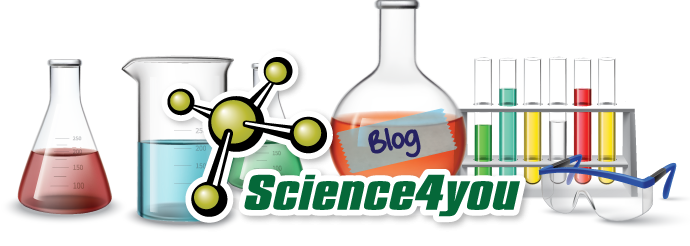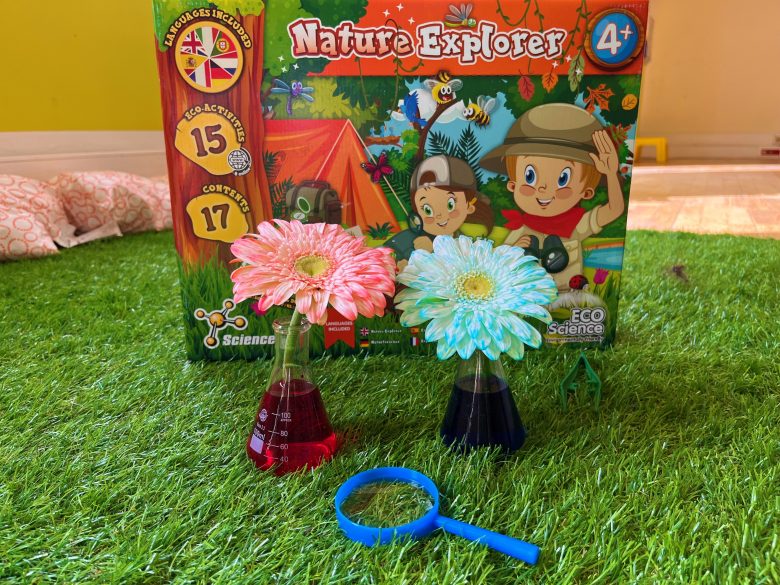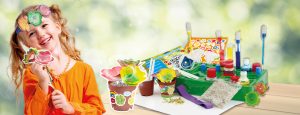We have discovered the perfect experiment to welcome spring: Colored Flowers! This is a super easy experiment to do with children and they love watching the flowers change colour.
For this experiment you’ll need:
🌈 1 White flower (carnation, gerbera or other flower of your choice) ;
🌈 Jar;
🌈 Water
🌈 Scissors
🌈 Food colouring;
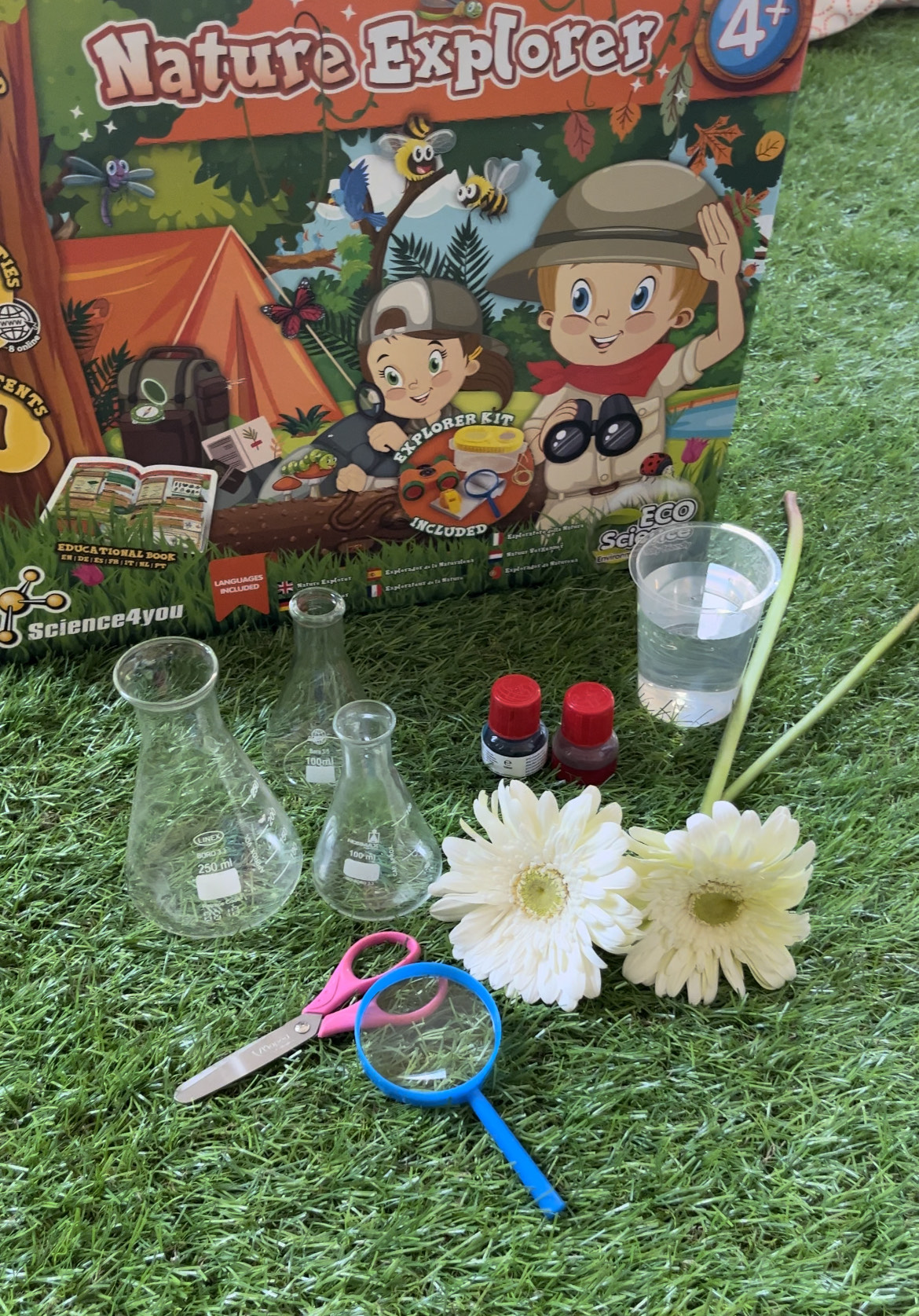
Instructions:
1 – Ask an adult to help you cut the stem end of a flower, diagonally;
2 – Put about 200 ml of water in a jar;
3 – Next, put about 15 drops of food colouring you have at home in the water and stir around a bit;
4 – Add your flower to the jar.
Note: Over the days, the flower will consume water. If necessary, add more water with food colouring so that the flower does not dehydrate;
What we observe:
A few hours or days later (variant depending on the flowers) we can start to see small changes in the flowers, such as faint streaks of colour along the petals. As the days pass, the flowers become more colourful. To speed up the process we can trim the stem a little.
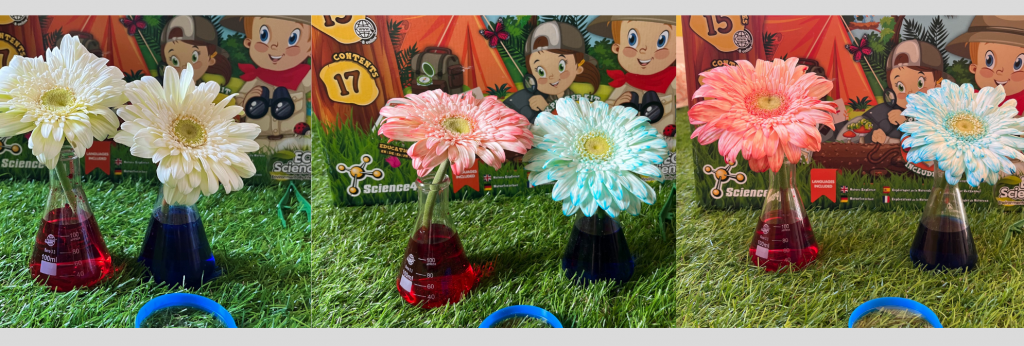
The stem carries nutrients and water to all parts of the plant, in this case water with dye. In this experiment we want to show children that plants receive water and nutrients from the earth through the root, running along the stem until they reach the petals. In the absence of a root, it is the stem that performs this function.
In the Science4you – Nature Explorer toy, you have this and other experiments perfect for discovering and exploring life around us.
In this kit, in addition to binoculars, a notepad and other items, you also have a magnifying glass that can help you observe in detail all the changes that occur in the flower.
Let’s celebrate spring with this incredible experience?
